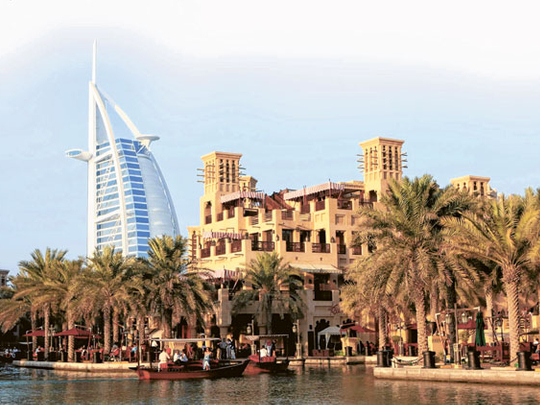
Dubai: The city emerged as the only one in the Middle East last year to achieve an increase in hotel occupancy and RevPAR (revenue per available room — an industry benchmark for performance), according to Ernst & Young's (E&Y) Middle East Hotel Benchmark Survey for November 2011.
While Dubai's hotels recorded a four per cent increase in occupancy (at 79 per cent), revenue notched up 4.5 per cent growth in the period from January to November over the same period in 2010 to Dh632 million. The average room rate (ARR) in the hotels, however, dropped by a slight 0.2 per cent to Dh797 from Dh799, according to the E&Y estimates.
"Dubai is the sole tourist destination in the region that has shown a rise in both occupancy and RevPar, with a very slight decline in room rates. Dubai has been successful in attracting a larger share of the GCC tourism market as well as penetrating the US and China markets more effectively as it is considered a stable and open market, boosting overall performance figures," Yousuf Wahbah, Partner and Head of Mena (Middle East and North Africa) Transaction Real Estate at Ernst & Young, told Gulf News in an emailed statement.
He added that despite the large increase in the number of rooms in 2011, overall RevPar has not been affected, which proves Dubai's "magnetic attraction" as a tourist destination.
Political instability
Elsewhere in the region, Cairo and Bahrain hotels led the year-to-date declines last year in room occupancies, with drops of 36 per cent and 29 per cent respectively, negatively affecting hotel RevPar in these markets considerably, according to the E&Y survey.
"This was primarily due to the political instability," Wahbah said.
Further, the year-to-date decline of 11 per cent in Beirut hotel occupancy can be attributed to multiple factors, including political upheaval in neighbouring countries and better rates and values in the EU due to the softening of the euro currency, Wahbah said.
"Despite average room rates in Beirut falling an average of 14.1 per cent, occupancy and tourist arrivals have lagged behind, pointing to the fact that Beirut needs to provide more security to tourists and attract visitors from new and more diverse markets," he said.
In Abu Dhabi, hotels saw revenues dropping by 6.2 per cent to Dh161 in the 11-month period from Dh172 in the same period of 2010, E&Y said in the report.
Occupancy in the UAE capital's hotels, however, inched up two per cent to 76 per cent. And, average nightly room rates declined 8.6 per cent from Dh232 in 2010 to Dh212 last year.
Owing to the political tensions in Egypt, Cairo hotels were the worst sufferers in the region, having witnessed the biggest falls of 39 per cent in occupancy levels and 52.4 per cent in room revenues, while Dubai's hotel apartments saw the region's biggest increase in occupancy at 83 per cent.
"An analysis of the year-to-date and monthly performance numbers for hotels in the Mena region point to a continued realignment in the regional hospitality market caused by three key developments: changes in the political landscape, increased availability of rooms due to new builds coming onto the market and an overall shift in tourist demography," Wahbah said.











